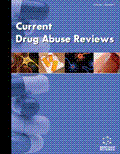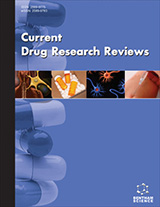Abstract
Although dopaminergic system represents the cornerstone in rewarding, other neurotransmitters can modulate both the reward system and the psychomotor effects of addictive drugs. Many hypotheses have been proposed for a better understanding of the reward system and its role in drug addiction. However, after many years of investigation, no single theory can completely explain the neural basis of drug addiction. Recent reports introduce novel neurotransmitters into the game e.g. dynorphins, orexins, histamine, gheralin and galanin. The interacting functions of these neurotransmitters have shown that the reward system and its role in drug dependence, is far more complicated than was thought before. Individual variations exist regarding response to drug exposure, vulnerability for addiction and the effects of different cues on reward systems. Consequently, genetic variations of neurotransmission are thought to influence reward processing that in turn may affect distinctive social behavior and susceptibility to addiction. However, the individual variations can not be based mainly on genetics; environmental factors seem to play a role too. Here we discuss the current knowledge about the orquestic regulation of different neurotransmitters on reward-seeking behavior and their potential effect on drug addiction.
Keywords: Dopamine, orexin, ghrelin, galanin, histamine, reward-seeking behavior, synaptic plasticity, signaling, individual variations, drug addiction.
Current Drug Abuse Reviews
Title:Reward-Seeking Behavior and Addiction: Cause or Cog?
Volume: 5 Issue: 3
Author(s): Oscar Arias-Carrion and Mohamed Salama
Affiliation:
Keywords: Dopamine, orexin, ghrelin, galanin, histamine, reward-seeking behavior, synaptic plasticity, signaling, individual variations, drug addiction.
Abstract: Although dopaminergic system represents the cornerstone in rewarding, other neurotransmitters can modulate both the reward system and the psychomotor effects of addictive drugs. Many hypotheses have been proposed for a better understanding of the reward system and its role in drug addiction. However, after many years of investigation, no single theory can completely explain the neural basis of drug addiction. Recent reports introduce novel neurotransmitters into the game e.g. dynorphins, orexins, histamine, gheralin and galanin. The interacting functions of these neurotransmitters have shown that the reward system and its role in drug dependence, is far more complicated than was thought before. Individual variations exist regarding response to drug exposure, vulnerability for addiction and the effects of different cues on reward systems. Consequently, genetic variations of neurotransmission are thought to influence reward processing that in turn may affect distinctive social behavior and susceptibility to addiction. However, the individual variations can not be based mainly on genetics; environmental factors seem to play a role too. Here we discuss the current knowledge about the orquestic regulation of different neurotransmitters on reward-seeking behavior and their potential effect on drug addiction.
Export Options
About this article
Cite this article as:
Arias-Carrion Oscar and Salama Mohamed, Reward-Seeking Behavior and Addiction: Cause or Cog?, Current Drug Abuse Reviews 2012; 5 (3) . https://dx.doi.org/10.2174/1874473711205030178
| DOI https://dx.doi.org/10.2174/1874473711205030178 |
Print ISSN 1874-4737 |
| Publisher Name Bentham Science Publisher |
Online ISSN 1874-4745 |
 23
23Related Articles
-
Paralog Specific Hsp90 Inhibitors – A Brief History and a Bright Future
Current Topics in Medicinal Chemistry Immune Cell Entry to Central Nervous System - Current Understanding and Prospective Therapeutic Targets
Endocrine, Metabolic & Immune Disorders - Drug Targets Polymer Drug Conjugates: Recent Advancements in Various Diseases
Current Pharmaceutical Design Brain Derived Neurotrophic Factor and Cognitive Status: The Delicate Balance Among People Living with HIV, with and without Alcohol Abuse
Current HIV Research Up-Regulation of TLR-4 in the Brain After Ischemic Kidney-Induced Encephalopathy in the Rat
CNS & Neurological Disorders - Drug Targets Narcolepsy in Adolescents: A Review and Three Case Reports
Adolescent Psychiatry Treating Sarcopenia in Older and Oldest Old
Current Pharmaceutical Design Is alpha-Synuclein Pathology a Target for Treatment of Neurodegenerative Disorders?
Current Alzheimer Research New Perspectives in HCV Therapy: Entry Inhibitors
Recent Patents on Anti-Infective Drug Discovery Intra-Renal Hemodynamic Changes After Habitual Physical Activity in Patients with Chronic Kidney Disease
Current Pharmaceutical Design Hemodynamic Behavior of Coronary Stents in Straight and Curved Arteries
Current Nanoscience Structural Comparison of the Interaction of Tubulin with Various Ligands Affecting Microtubule Dynamics
Current Cancer Drug Targets Neuropharmacological Aspects of Crocus sativus L.: A Review of Preclinical Studies and Ongoing Clinical Research
CNS & Neurological Disorders - Drug Targets Cardiovascular Morbidity and Mortality in Obstructive Sleep Apnea
Current Pharmaceutical Design Therapeutic Targeting of Chemokines with Monoclonal Antibodies
Current Immunology Reviews (Discontinued) Immune Senescence and Vaccination in the Elderly
Current Topics in Medicinal Chemistry Abstracts from Speakers
Cardiovascular & Hematological Disorders-Drug Targets Advanced Approaches of Bioactive Peptide Molecules and Protein Drug Delivery Systems
Current Pharmaceutical Design Patent Selections :
Recent Patents on CNS Drug Discovery (Discontinued) Sleep Related Disorders in the Elderly: An Overview
Current Respiratory Medicine Reviews
















